31 days of Family challenge
WEEK 4
Welcome to the Week Four of Our Family Photography Challenge!
If you're new here his is a challenge where we find and capture the beauty in our everyday family life. Here is a post that explains it in more detail if you're new here! And if you want to see previous weeks prompts you'll find week 1 here , week 2 here, and week 3 here.
So let's see what we're clicking in week 4! By the way - you'll find more examples DAILY on our social media so make sure to follow us!
Monday: QUIET MOMENT
Idea: It's oh, so quiet...shhhh....shhhh......Quiet moments are as significant as the lively ones, where photographing your family life is often about capturing some 'doing', turning your camera towards those quieter, less hectic times offers a contrast that adds depth to the narrative of family life. These moments can manifest in different forms: a child immersed in thought or a parent enjoying a rare moment of solitude. It's your chance to document the individual personalities and the need for personal space within the family dynamic - 'how' your kids are not just 'what they're doing'. But I also want you to think about capturing yourself in that context - as parents, our quiet #me moments are few and far between so I want to encourage you to make some for yourself and then photograph it.
What to capture?
Candid is the way to go. Look for instances when your child is absorbed in quiet play, reading, or simply daydreaming. Capture the serenity on their faces and the calmness of their body language. The setting of these quiet moments adds context so se wide shots to show the subject in their quiet space, providing a sense of the environment and how they fit into it. But don't forget to zoom in and crop tight too, to draw attention to important details - especially if there is a sensory element to them. Another favourite of mine is capturing a quiet moment amidst the surrounding activity - a child engrossed in a book while life buzzes around them, or a parent stealing a moment of peace in a busy household, highlights the oasis of tranquility in everyday chaos.
As a parent, finding a moment to yourself can be rare - think about what it means for you and photograph these instances – enjoying a cup of coffee in silence, reading a book, or just sitting contemplatively. Reflect on the story and emotion behind the quiet moment. Is it a break from a busy day, a moment of introspection, or a brief respite in a hectic life?
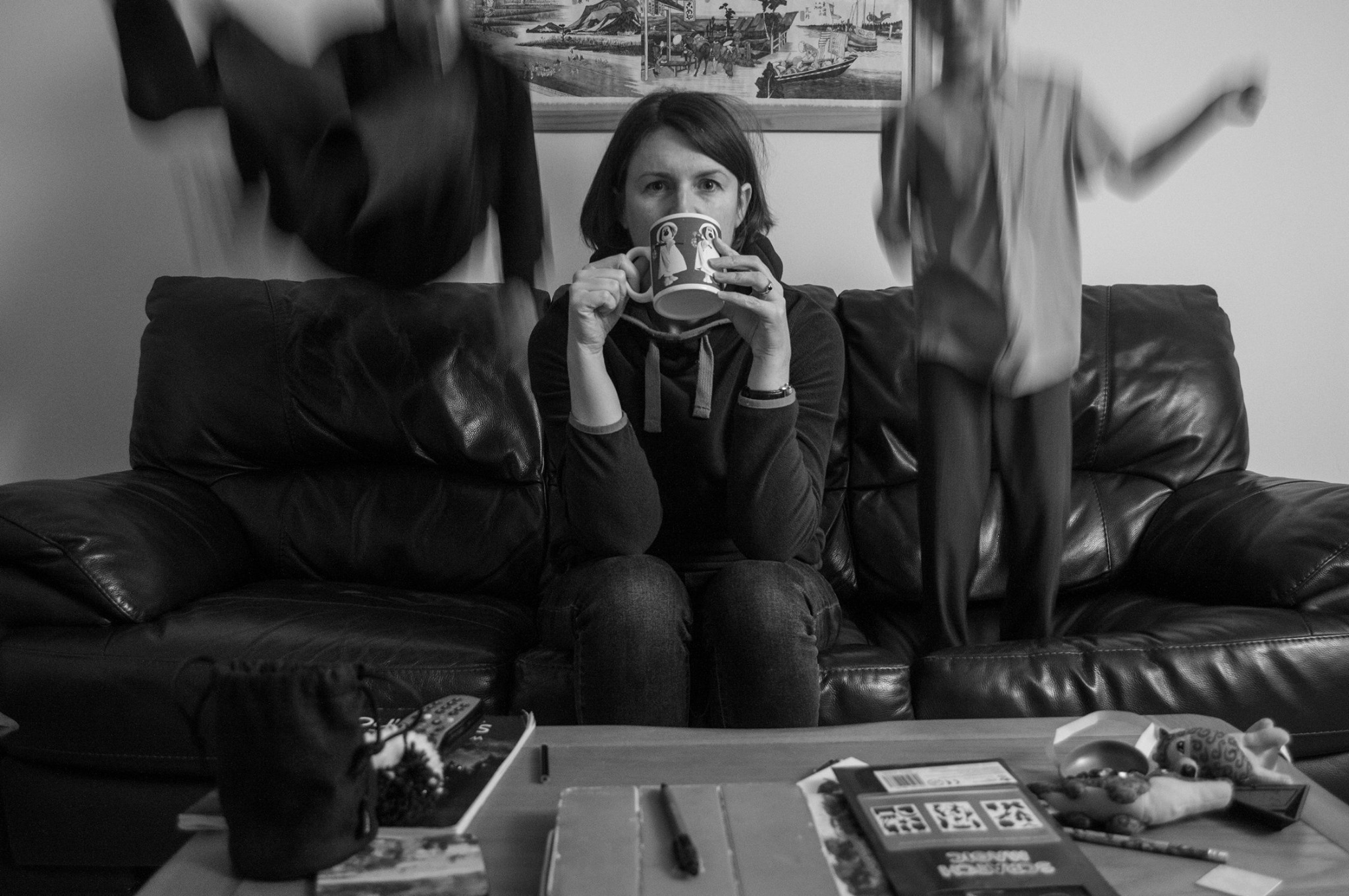
Photo by Helen Grey
Tuesday: SPORTS AND EXCERCISE
Idea: Do you do sport as a family? Are you forever freezing on the side of a muddy football or rugby pitch? If so, you can't not include them in your family photography. Photographing sports and exercise in a family context is about capturing the essence of an active lifestyle and the joy it brings to individual family members and the family as a whole.
What to capture?
Sports and exercise are all about movement. Capture the energy and motion — a child kicking a ball, a family hiking through a trail, or a parent lifting weights. Use a faster shutter speed to freeze the action or a slower one to create a sense of motion. The faces during physical activity can be incredibly expressive - photograph the concentration, determination, effort, and the bursts of joy and accomplishment. Focus on the details like the grip on a tennis racket, the laces of running shoes, or the reflections in a swimming pool. These elements can add a tactile and realistic feel to your photos. Don’t forget the moments before and after the activity — the warm up, cool-down, the muddy boots, the tired but satisfied expressions. These moments can be just as telling and emotionally rich as the activity itself.
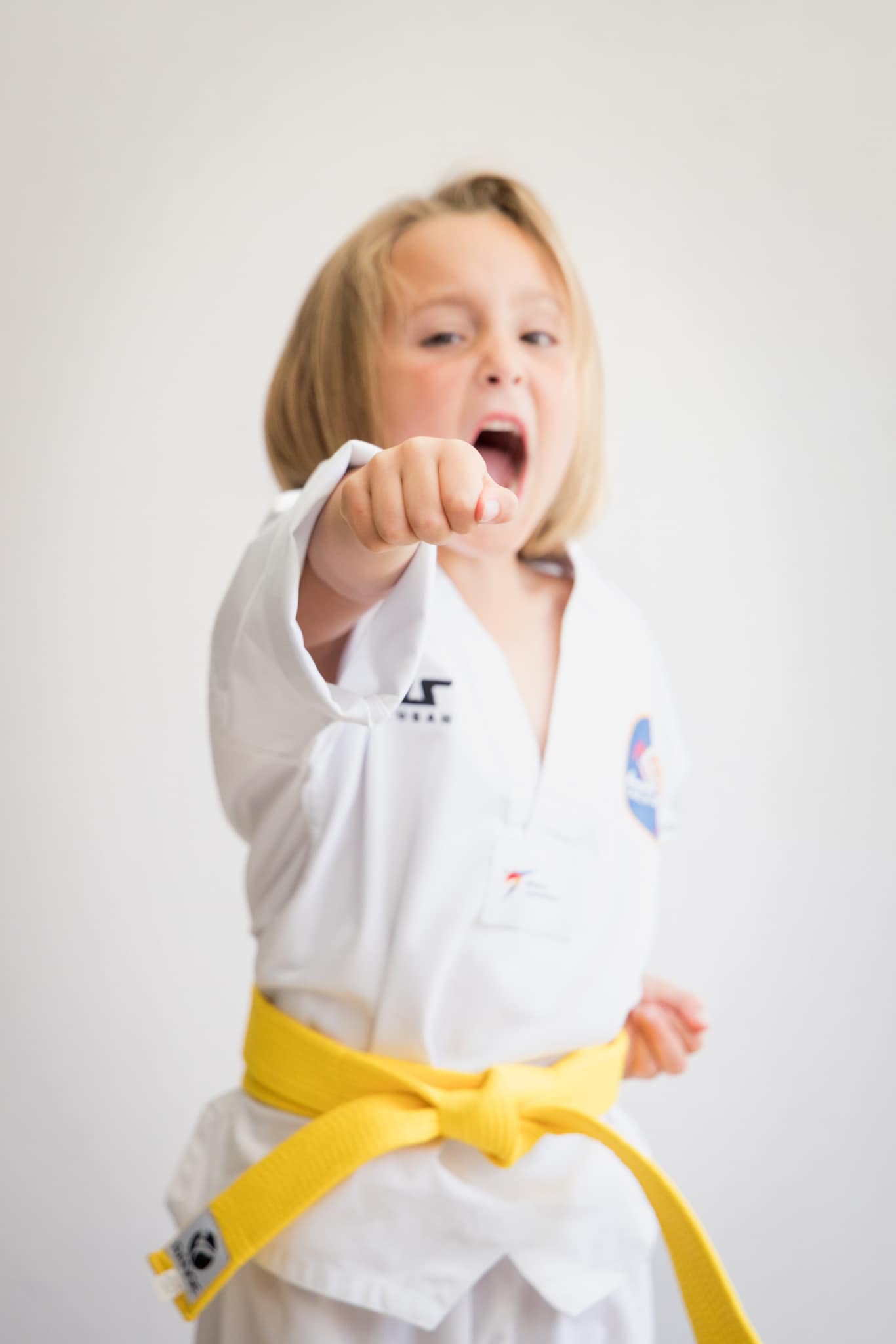
Photo by Helen Simon
Wednesday: KIDS ROOM
Idea: A child's room is more than just a space for sleep; it's a sanctuary, a playroom, a study area, and a reflection of their personality and interests. The way the room is decorated, the toys they cherish, the books they read, and even the mess that often ensues, all tell a story about who they are at this stage of their life. These images serve as a time capsule, preserving the memories of their childhood environment that shapes so much of their early years.
What to capture? Focus on the elements that make the room uniquely theirs — a favorite poster on the wall, a well-loved stuffed animal, or a collection of trophies - these details are a window into their interests and passions. Capture them engaged in their room – playing with toys, drawing, reading, or even tidying up. These activities can show how they use their space and what they enjoy doing in it. Document how they interact with their room – reaching for a book on a high shelf, organizing their desk, or making their bed. The way the room is decorated and organized (or disorganized) can tell a story about the child's personality and lifestyle. A neat and tidy room versus a creatively chaotic one can offer different insights. If you’ve been documenting their room over time, capture the changes that occur as they grow. The transition from baby to toddler to school-age child, reflected in their room, can be a poignant reminder of the passage of time.
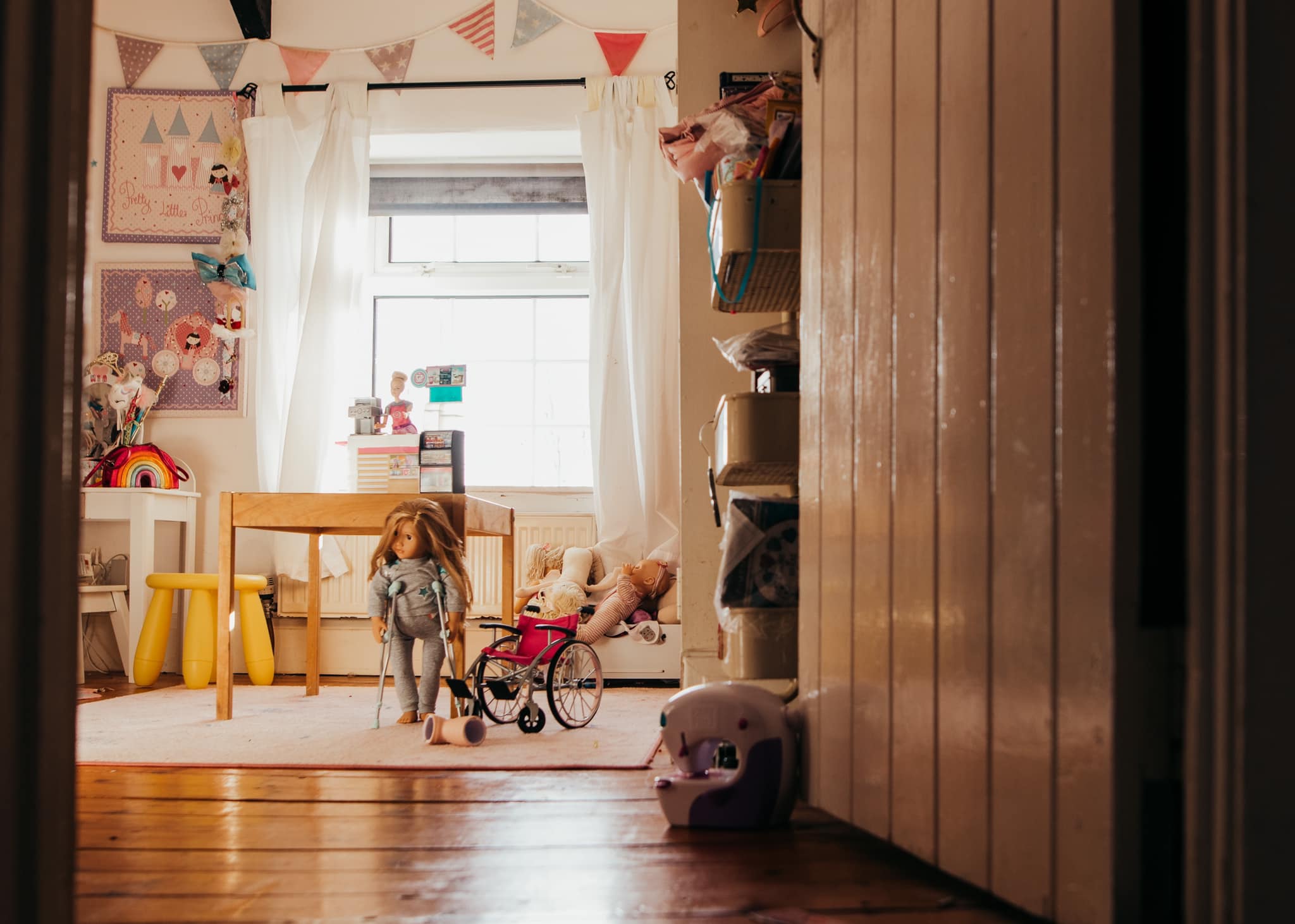
Photo by Jo Griffiths
Thursday: HOMEWORK
Idea: 'Seriously? You want me to photograph homework now? It's hardly something we choose or enjoy doing!' - well, yes, BUT. If your kids are school age, it's still a part of what happens at home so it's still something that's worth documenting - even if it elicits less that enthusiastic response. It’s a daily ritual that can reveal a lot about a child’s character, their approach to challenges, their focus, and their problem-solving skills. Capturing homework time in family photography is about more than documenting academic diligence; it's about capturing the moments of growth, learning, and family support that surround this daily routine.
What to capture?
Photograph the expressions of concentration and focus during homework. The furrowed brows, the bite of the lip in deep thought, or the lightbulb moment of understanding are all powerful indicators of the mental effort involved. If a parent or sibling is involved, capture these teaching and learning moments. Whether it’s a parent explaining a concept, a sibling helping out, or even a moment of frustration, these interactions are rich in emotional content and narrative. The environment where homework is done can influence the mood of the image - a child sprawled out on the living room floor with papers around them, sitting at a tidy desk, or working at the kitchen table while life buzzes around – each setting tells a different story. Zoom in on the details — hands writing, the array of school supplies, or a close-up of the homework itself. These shots can add a tactile quality to the photo and highlight the task at hand. Homework time can be emotionally varied. Capture not just the moments of focus and success, but also those of confusion, fatigue, and even the occasional joy. This spectrum adds depth and realism to the story.
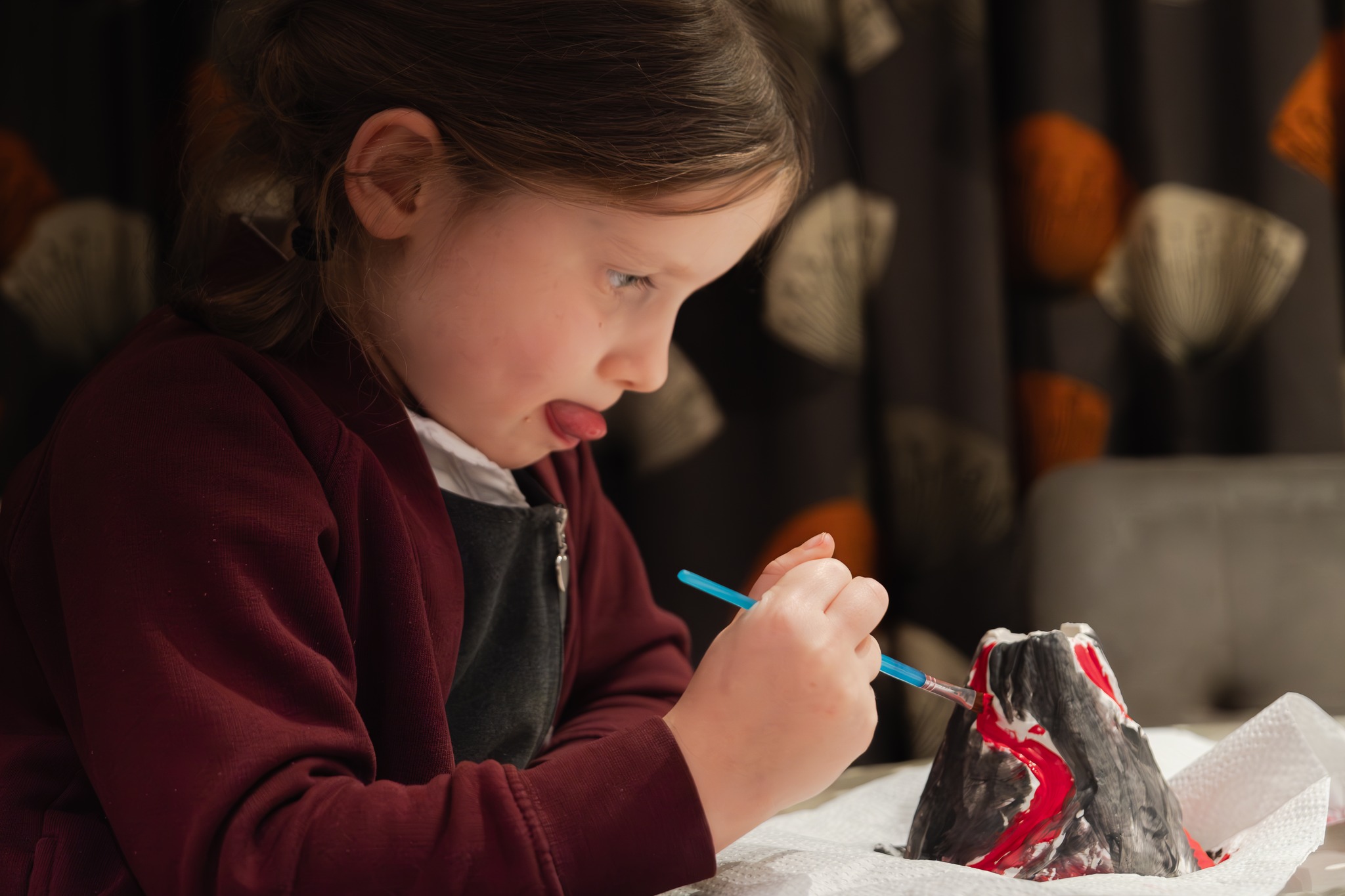
Photo by Louise Posocco
Friday: MUSIC AND DANCE
Idea: There is something about music that just brings out our most authentic, joyous selves, and they are absolutely wonderful to capture. These photos can be about spontaneous bursts of energy, planned performances, or quiet moments of musical exploration. It’s about documenting the rhythm of the household, the shared experiences of sound and movement, and the individual expressions of musicality and dance. Point your camera towards a child practicing an instrument, get snapping a family dance party in the living room or capture the ballet fascination phase - these moments are all filled with emotion, energy, and joy.
What to capture?
Music and dance are deeply expressive. Capture the joy, concentration, or even the frustration that comes with learning a new piece. In dance, the movement is key. Try to capture the flow and energy of the dance - a twirl, a jump, or a synchronized family dance routine. Use a faster shutter speed to freeze motion or a slower one to capture the blur of movement. If it involves playing an instrument or learning dance steps, document the practice and learning process. The hands on the piano keys, the careful positioning of feet, or the focused reading of music sheets are all part of the journey. Music and dance often bring family members together. Capture these interactions - siblings playing guitars together, a parent-child dance-off, or a group sing-along. Focus on the details - the strings of a guitar, the tapping of dancing feet, or the hands conducting a rhythm. These close-ups can add a layer of depth to your storytelling.
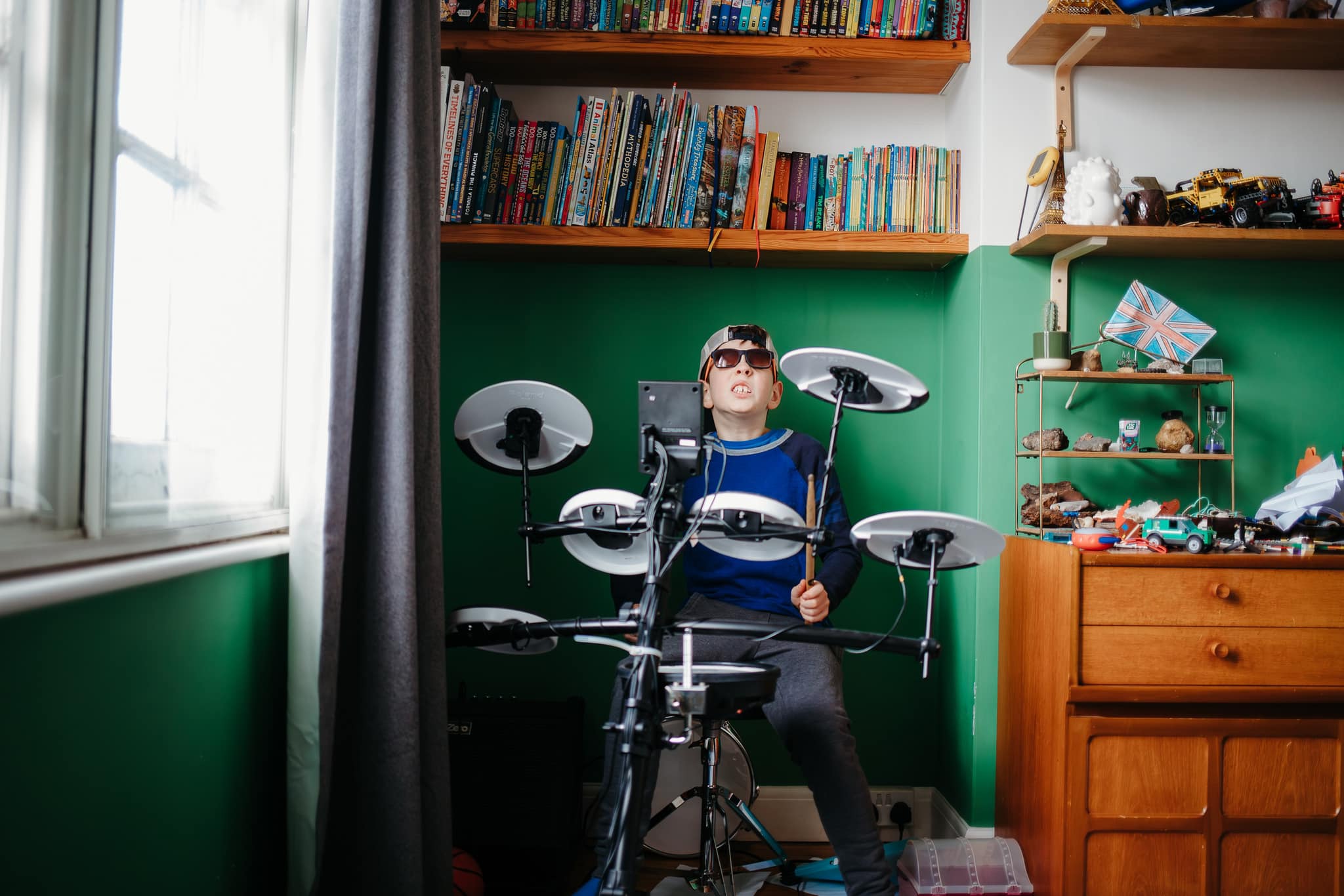
Photo by Amber Parker Wilson
Saturday: PLAYTIME
Idea: Playtime is a fundamental and joyous part of childhood, offering a window into a child's imagination, creativity, and growth. Playtime can range from solitary imaginative play to interactive family games and capturing these moments in photography is not just about documenting leisure activities; it’s about preserving the essence of childhood, celebrating imagination and creativity and observing the joy that flows from it.
What to capture?
Children often show their most uninhibited emotions during playtime. Capture their laughter, excitement, focus, or even frustration. Playtime is where imagination comes to life. Capture scenes that show creativity in action – a child dressing up in a costume, creating art, or setting up a fantasy world with toys. Many play activities involve physical movement. Photograph the action – jumping on a trampoline, running with a kite, or dancing with abandon. Use a faster shutter speed to freeze motion or a slower one to capture the blur and energy of movement. Sometimes, playtime is a solitary activity. Capture a child engaged in solo play, like solving a puzzle, drawing, or playing with action figures. Look for storytelling elements within playtime. The setup of a dollhouse, the storyline in a pretend game, or the structure of a block tower can all tell a story about the child’s imagination and cognitive development.
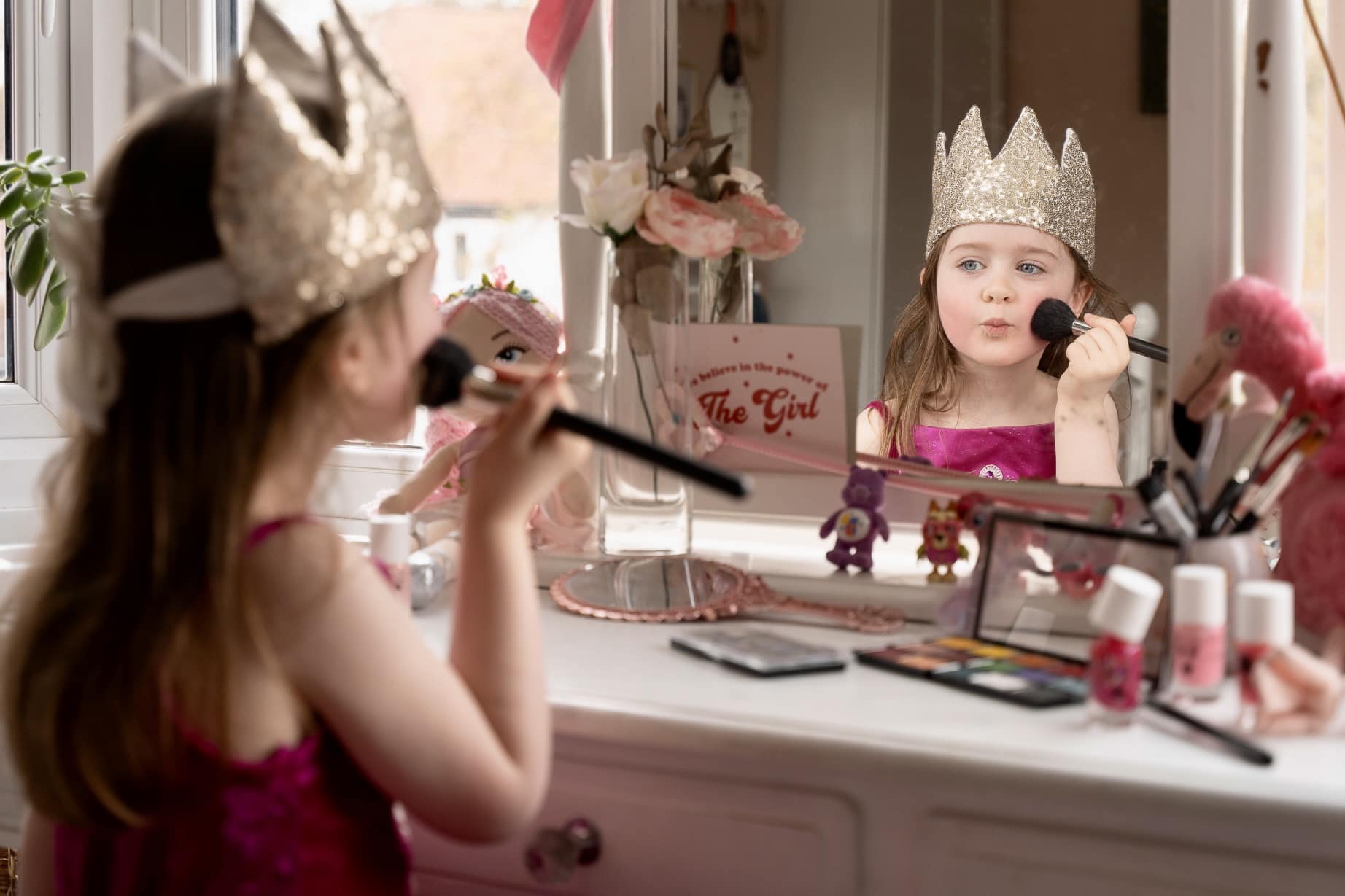
Photo by Helen Roberts
Sunday: little pleasures
Idea: We all have little pleasures that make our lives just that little bit better. It's usually nothing big or expensive, but it gives us moments of personal joy and wellbeing that, collectively, create a rich, fulfilling life. It truly is about the beauty found in the ordinary and the importance of cherishing the simple things that make life special. These can be as simple as a quiet cup of tea in the morning, the laughter shared over a silly joke, the absolute joy or being flung up in the air on a swing, or the comfort of a warm blanket on a chilly evening.
What to capture? Look for the simple, everyday activities that bring smiles and contentment. It could be the pleasure of baking cookies together, the calmness of a family pet curled up on a lap, or the laughter during a casual family game. Capture those moments that often go unnoticed – reading a book in a cozy corner, the peacefulness of a child coloring, or the serene early morning routines. Focus on the shared experiences of little pleasures, like enjoying an ice cream together on a sunny day, working together in the garden, or simply watching a movie as a family. The expressions during these moments can be subtle yet deeply telling. A contented smile, eyes lighting up at a small surprise, or a relaxed demeanor can convey the joy of little pleasures. Document the little pleasures within everyday routines – the way a family member prepares their coffee, the routine of watering plants, or the evening walks.
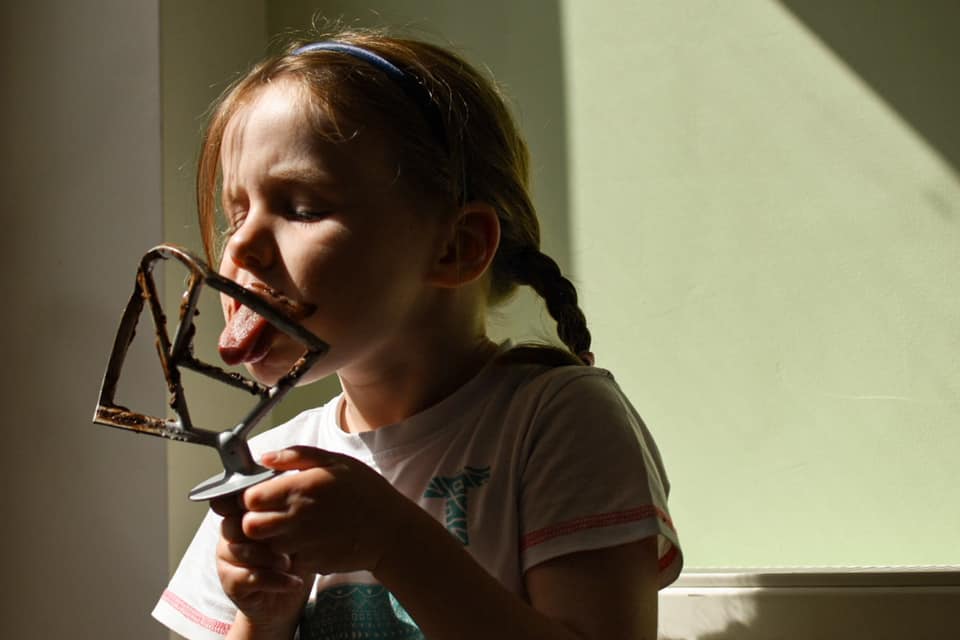
Photo by Emily Eatough
For more examples, ideas and daily inspiration, follow us on instagram at @photoparents!
